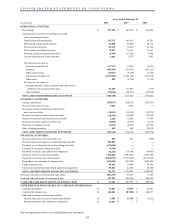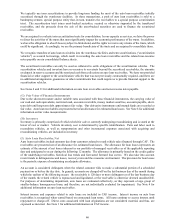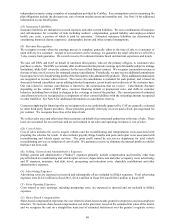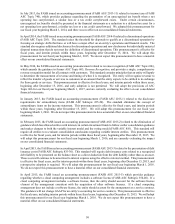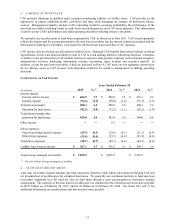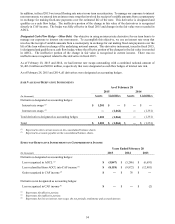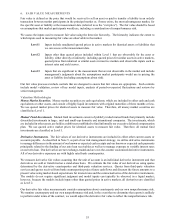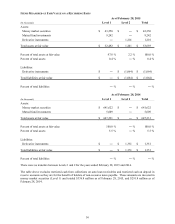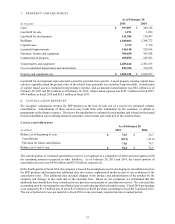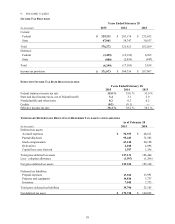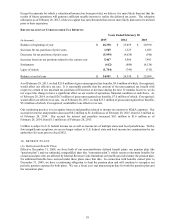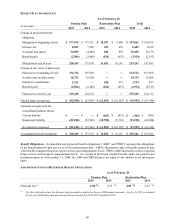CarMax 2015 Annual Report Download - page 55
Download and view the complete annual report
Please find page 55 of the 2015 CarMax annual report below. You can navigate through the pages in the report by either clicking on the pages listed below, or by using the keyword search tool below to find specific information within the annual report.
51
3. CARMAX AUTO FINANCE
CAF provides financing to qualified retail customers purchasing vehicles at CarMax stores. CAF provides us the
opportunity to capture additional profits, cash flows and sales while managing our reliance on third-party finance
sources. Management regularly analyzes CAF's operating results by assessing profitability, the performance of the
auto loan receivables including trends in credit losses and delinquencies, and CAF direct expenses. This information
is used to assess CAF's performance and make operating decisions including resource allocation.
We typically use securitizations to fund loans originated by CAF, as discussed in Note 2(F). CAF income primarily
reflects the interest and fee income generated by the auto loan receivables less the interest expense associated with the
debt issued to fund these receivables, a provision for estimated loan losses and direct CAF expenses.
CAF income does not include any allocation of indirect costs. Although CAF benefits from certain indirect overhead
expenditures, we have not allocated indirect costs to CAF to avoid making subjective allocation decisions. Examples
of indirect costs not allocated to CAF include retail store expenses and corporate expenses such as human resources,
administrative services, marketing, information systems, accounting, legal, treasury and executive payroll. In
addition, except for auto loan receivables, which are disclosed in Note 4, CAF assets are not separately reported nor
do we allocate assets to CAF because such allocation would not be useful to management in making operating
decisions.
COMPONENTS OF CAF INCOME
Years Ended February 28
(In millions) 2015 % (1) 2014 % (1) 2013 % (1)
Interest margin:
Interest and fee income $604.9 7.7
$ 548.0 8.3 $ 495.3 9.2
Interest expense (96.6) (1.2) (90.0) (1.4) (95.1) (1.8)
Total interest margin 508.3 6.5 458.0 6.9 400.2 7.4
Provision for loan losses (82.3) (1.0) (72.2) (1.1) (56.2) (1.0)
Total interest margin after
provision for loan losses 426.0 5.4 385.8 5.8 344.0 6.4
Other income ― ― 0.1 ― ― ―
Direct expenses:
Payroll and fringe benefit expense (25.3) (0.3) (22.6) (0.3) (21.2) (0.4)
Other direct expenses (33.4) (0.4) (27.1) (0.4) (23.5) (0.4)
Total direct expenses (58.7) (0.7) (49.7) (0.8) (44.7) (0.8)
CarMax Auto Finance income $367.3 4.7
$ 336.2 5.1 $ 299.3 5.6
Total average managed receivables $ 7,859.9 $ 6,629.5 $ 5,385.5
(1) Percent of total average managed receivables.
4. AUTO LOAN RECEIVABLES
Auto loan receivables include amounts due from customers related to retail vehicle sales financed through CAF and
are presented net of an allowance for estimated loan losses. We generally use warehouse facilities to fund auto loan
receivables originated by CAF until we elect to fund them through a term securitization or alternative funding
arrangement. The majority of the auto loan receivables serve as collateral for the related non-recourse notes payable
of $8.47 billion as of February 28, 2015, and $7.25 billion as of February 28, 2014. See Notes 2(F) and 11 for
additional information on securitizations and non-recourse notes payable.




